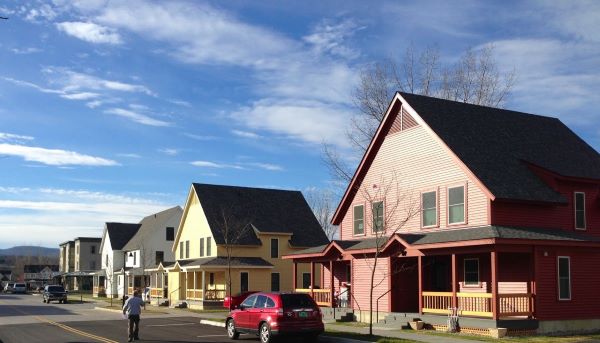 A Housing Needs Assessment is a comprehensive analysis used to identify the current and projected housing needs of a region. It examines factors such as population growth, household demographics, and the availability and affordability of housing. This assessment informs policy makers and guides the allocation of resources, ensuring that housing strategies effectively address local needs.
A Housing Needs Assessment is a comprehensive analysis used to identify the current and projected housing needs of a region. It examines factors such as population growth, household demographics, and the availability and affordability of housing. This assessment informs policy makers and guides the allocation of resources, ensuring that housing strategies effectively address local needs.
The assessment is a critical tool for state and local governments, enabling them to shape housing policies and investments. It also plays a role in securing federal funding through programs like the Department of Housing and Urban Development's (HUD) Consolidated Plan. The Housing Division is responsible for overseeing the development of this assessment and has contracted with the Vermont Housing Finance Agency to develop the past two reports.
2025 Housing Needs Assessment (Current)
The Department of Housing and Community Development (DHCD) is proud to publish the Vermont 2025 Statewide Housing Needs Assessment, this 5-year document looks at the current and expected need for housing development in the state by 2029. The Department of Housing and Community Development contracted with the Vermont Housing Financing Agency (VHFA) to complete the 2025-2029 Statewide Housing Needs Assessment. VHFA also completed the 2020-2024 assessment and provides robust housing and demographic data online at www.housingdata.org.
The report's findings show Vermont's statewide housing crisis is deepening, and housing costs are stretching Vermonters' budgets thin. Vermont has a long-standing, statewide shortage of affordable homes available to lower income households, which became more severe with the COVID-19 pandemic and resulting market shifts. Due in part to a slow pace of home building and elevated construction costs, vacancy rates declined to near record levels, home prices and rents jumped, and homelessness increased dramatically. The report estimates that the pace of home building will need to increase to create the 24,00036,000 additional year-round homes needed in 2025-2029 to meet demand, normalize vacancy rates, house the homeless and replace homes lost from the stock through flooding and other causes.
Below you can find the full 2025 Housing Needs Assessment, including "Fact Sheets" for each chapter of the report that highlight the major takeaways and interesting findings.
Full Report: 2025 Vermont Housing Needs Assessment
Fact Sheet #1: Highlights Fact Sheet #6: Seniors
Fact Sheet #2: Demographics Fact Sheet #7: Large and Small Households
Fact Sheet #3: Housing Stock Fact Sheet #8: Race and Ethnicity
Fact Sheet #4: Renters Fact Sheet #9: Homelessness
Fact Sheet #5: Homeowners Fact Sheet #10: Special Needs
Statewide and Regional Housing Targets
The Statewide and Regional Housing Targets report was a requirement of the legislature as part of the HOME Act of 2023 and ACT 181 of 2024. The law required DHCD and VAPDA to coordinate to develop housing production targets. VHFA was contracted to help establish those targets. The report examines in new and greater detail the depths of Vermont’s housing shortage and developed a methodology for creating regional targets for 2030 and 2050. The regional areas are based on Vermont’s eleven Regional Planning Commission boundaries.
Full Report: Appendix 1 - Statewide and Regional Housing Targets (Updated March 10, 2025)
Past Reports
In 2019, the Department of Housing and Community Development contracted with the Vermont Housing Finance Agency (VHFA) to conduct the Vermont Housing Needs Assessment. This assessment informed the submission of the State’s 5-Year Consolidated Plan to the U.S. Department of Housing and Urban Development (HUD) and other statewide and county housing and policy decisions. The Consolidated Plan is a requirement of HUD and combines information on several federal entitlement grant programs: Community Development Block Grants (CDBG), HOME Investment Partnerships Program (HOME), Emergency Solutions Grants (ESG), the National Housing Trust Fund (HTF) and Housing Opportunities for Persons with AIDS (HOPWA). Vermont is a recipient of CDBG, HOME, HTF, and ESG funds.
In addition to the written report, VHFA hosts and regularly updates the indicators included in this report on the Community Profile section of www.housingdata.org as a resource for anyone interested in the demographic makeup, housing needs, and economic indicators for communities and regions around Vermont.
Full Report: 2020 Vermont Housing Needs Assessment (5.0 MB)
In 2019, the Vermont Housing Finance Agency (VHFA), Vermont Housing and Conservation Board (VHCB) and the Department of Housing and Community Development (DHCD) of the Agency of Commerce and Community Development initiated a study designed to help ensure that State resources for affordable housing are being used efficiently to meet the housing needs of low-income Vermonters. The primary objectives of this affordable rental housing cost study are to examine factors affecting the cost of affordable rental housing and to provide achievable recommendations to contain or reduce total development costs without sacrificing housing quality or other critical policy objectives. This report builds on prior studies of housing costs in the state, as well as recent national research on cost effectiveness in the affordable housing delivery system.
Full Report: Analysis of Vermont Affordable Rental Housing Development Costs
The previous statewide Housing Needs Assessment conducted by the firm Bowen National Research in 2014 for the 2015-2020 Consolidated Plan is provided below. In addition to the statewide analysis, Bowen's report included county-level housing needs assessments for the first time. This was made possible through funding provided by Two Rivers-Ottauquechee Regional Commission, the Vermont Agency of Human Services, the Vermont Housing and Conservation Board, Housing Vermont, the Vermont State Housing Authority, and the NeighborWorks® Alliance of Vermont.
Full Report: Statewide Vermont Housing Needs Assessment
County-level reports: Addison, Bennington, Caledonia, Chittenden, Essex, Franklin, Grand Isle, Lamoille, Orange, Orleans, Rutland, Washington, Windham, Windsor
